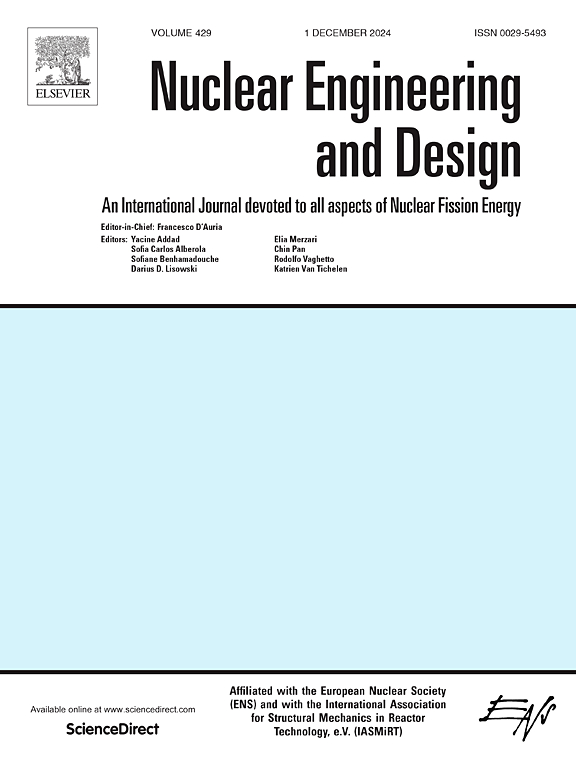Research on the intelligent control strategy of pressurizer pressure in PWRs based on a fuzzy neural network PID controller
IF 1.9
3区 工程技术
Q1 NUCLEAR SCIENCE & TECHNOLOGY
引用次数: 0
Abstract
For pressurized water reactors (PWRs), it is traditional method to use proportional-integral-derivative (PID) controllers to adjust the pressure and liquid level of the pressurizer. Traditional PID controllers have limitations, such as fixed parameters and an inability to adapt to changes in operating conditions. To address this issue, this paper proposes an intelligent control method based on a fuzzy neural network (FNN) PID approach for the pressurizer pressure control. To assess the control performance of this proposed method, a simulation code was developed. This code incorporated a two-region non-equilibrium model of the pressurizer, coupling with simulation of PID control, fuzzy PID control, and FNN-PID control. The typical PWRs pressurizer is simulated in the typical variable load transient process. The pressure simulation results under the control of these three controllers are compared, and the effectiveness of the FNN-PID controller proposed in this paper is also verified.
求助全文
约1分钟内获得全文
求助全文
来源期刊

Nuclear Engineering and Design
工程技术-核科学技术
CiteScore
3.40
自引率
11.80%
发文量
377
审稿时长
5 months
期刊介绍:
Nuclear Engineering and Design covers the wide range of disciplines involved in the engineering, design, safety and construction of nuclear fission reactors. The Editors welcome papers both on applied and innovative aspects and developments in nuclear science and technology.
Fundamentals of Reactor Design include:
• Thermal-Hydraulics and Core Physics
• Safety Analysis, Risk Assessment (PSA)
• Structural and Mechanical Engineering
• Materials Science
• Fuel Behavior and Design
• Structural Plant Design
• Engineering of Reactor Components
• Experiments
Aspects beyond fundamentals of Reactor Design covered:
• Accident Mitigation Measures
• Reactor Control Systems
• Licensing Issues
• Safeguard Engineering
• Economy of Plants
• Reprocessing / Waste Disposal
• Applications of Nuclear Energy
• Maintenance
• Decommissioning
Papers on new reactor ideas and developments (Generation IV reactors) such as inherently safe modular HTRs, High Performance LWRs/HWRs and LMFBs/GFR will be considered; Actinide Burners, Accelerator Driven Systems, Energy Amplifiers and other special designs of power and research reactors and their applications are also encouraged.
 求助内容:
求助内容: 应助结果提醒方式:
应助结果提醒方式:


